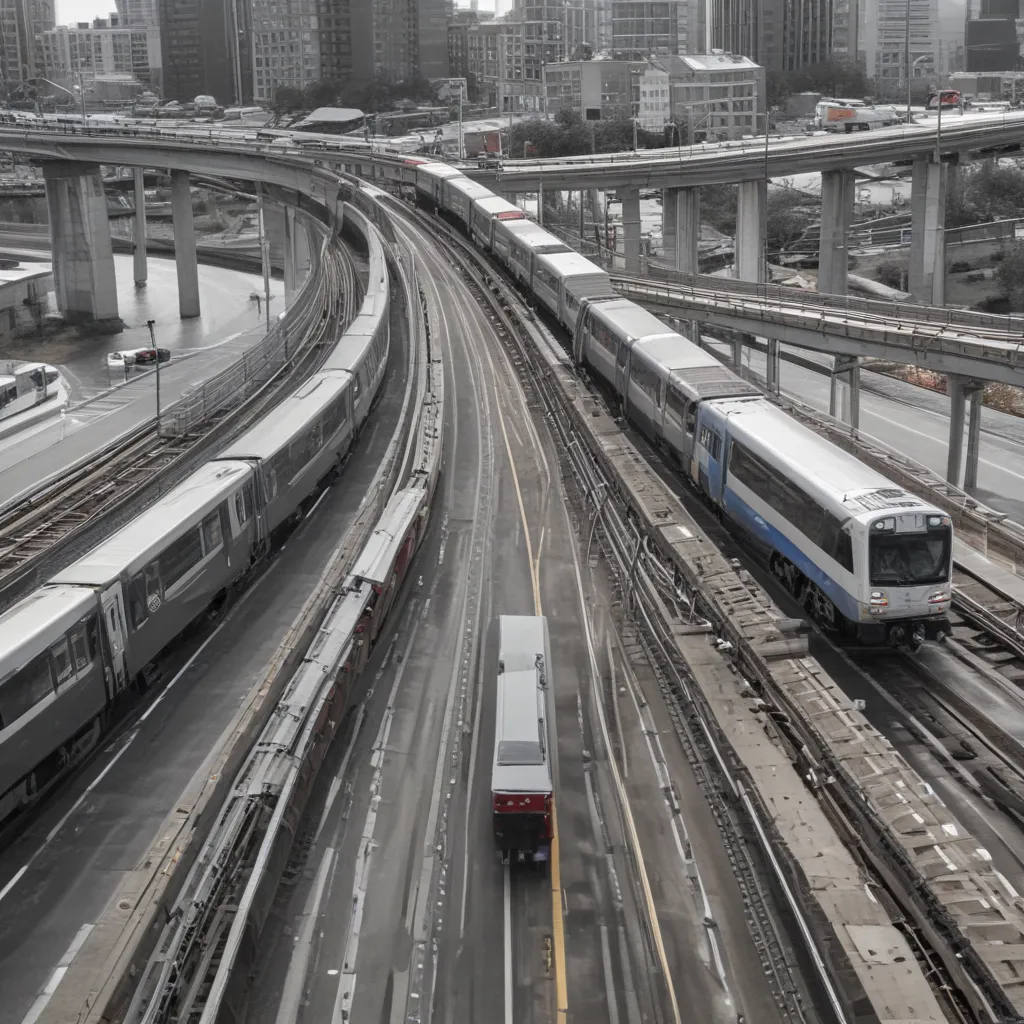
Navigating the Rapidly Evolving Automotive Landscape
It’s a balmy summer day in Orange County, California, and the team at our RV and fleet vehicle repair company is bustling with activity. As I walk through the garage, the familiar sounds of wrenches turning and engines roaring fill the air, reminding me of the constant evolution we face in the transportation industry.
The world of automotive repair is no stranger to change, and in recent years, the pace of innovation has only accelerated. From the rise of electric vehicles to the increasing automation of our roads, the landscape is shifting beneath our feet. As the owner of this humble repair shop, I’ve had a front-row seat to these transformations, and I can tell you, it’s been quite a ride.
Embracing Electric Vehicles: Powering the Future of Transportation
One of the most significant trends we’ve witnessed in recent years is the rapid growth of electric vehicles (EVs). What was once a niche market has now become a major player, with major automakers like Tesla, Chevrolet, and Nissan leading the charge. And let me tell you, the impact on our business has been nothing short of profound.
Traditional Vehicles Electric Vehicles Internal combustion engines Electric motors Reliance on gasoline/diesel Powered by rechargeable batteries Routine oil changes and tune-ups Less maintenance requirements Loud engine noises Quiet, smooth operation
As more and more of our customers transition to electric cars and RVs, the demands on our repair services have shifted. Gone are the days of oil changes and spark plug replacements – instead, we find ourselves delving into the complex world of battery management systems, regenerative braking, and the intricate web of sensors and software that power these new-age vehicles.
It’s been a steep learning curve, I’ll admit. But our team has embraced the challenge, constantly upskilling and staying ahead of the curve. We’ve invested in specialized training, acquired the latest diagnostic tools, and forged partnerships with EV manufacturers to ensure we can provide our customers with the best possible service.
Autonomous Vehicles: The Future is Closer than You Think
But the transformation doesn’t stop there. As if electric vehicles weren’t enough to wrap our heads around, the rise of autonomous, self-driving cars is rapidly changing the game. And let me tell you, it’s not just the stuff of science fiction – it’s happening right here, right now.
Traditional Driving Autonomous Driving Human-operated Computer-controlled Reliance on driver attention and skill Advanced sensors and algorithms Potential for human error and distraction Consistent, data-driven decision making Limited ability to multitask while driving Potential for increased productivity and safety
Now, I know what you’re thinking – how in the world does a repair shop like ours adapt to this brave new world of self-driving cars? Well, let me tell you, it’s been a fascinating journey.
As these autonomous vehicles become more prevalent on our roads, we’ve had to rethink our entire approach to vehicle maintenance and repair. Gone are the days of simple oil changes and tire rotations – now, we’re dealing with complex sensor arrays, sophisticated software, and the ever-evolving world of vehicle-to-vehicle (V2V) and vehicle-to-infrastructure (V2I) communication.
It’s a whole new ballgame, and we’ve had to get creative to stay ahead of the curve. We’ve invested in advanced diagnostic equipment, trained our technicians to understand the intricacies of these autonomous systems, and forged partnerships with technology companies to ensure we can provide our customers with the best possible service.
The Rise of Shared Mobility: Rethinking Transportation Ownership
But the changes don’t stop there. In recent years, we’ve also witnessed the rise of shared mobility solutions, from car-sharing services like Zipcar to ride-hailing platforms like Uber and Lyft. And as these models continue to grow in popularity, they’re having a profound impact on the way we think about transportation.
Traditional Vehicle Ownership Shared Mobility Individual ownership of vehicles Shared access to vehicles Responsibility for maintenance and repairs Maintenance and repairs handled by service providers Underutilized vehicles sitting idle More efficient use of vehicles Higher upfront costs of vehicle purchase Lower per-use costs for consumers
As more and more people embrace the convenience and flexibility of these shared mobility solutions, it’s forcing us to rethink our entire approach to vehicle maintenance and repair. Instead of servicing individual vehicles, we now find ourselves working with fleet operators, managing the maintenance and repair needs of entire vehicle pools.
It’s a fascinating challenge, and one that’s required us to develop new skills and capabilities. We’ve had to streamline our processes, invest in fleet management software, and forge partnerships with shared mobility providers to ensure we can keep their vehicles on the road and their customers happy.
Navigating the Future: Adaptability is Key
But through it all, one thing has remained constant: our unwavering commitment to providing top-notch service to our customers. Whether they’re driving a classic RV, a cutting-edge electric vehicle, or a shared mobility platform, we’re here to help them navigate the ever-changing landscape of transportation.
It’s been a wild ride, to be sure. But as I look around our bustling garage, I can’t help but feel a sense of excitement and optimism. The future of transportation is here, and we’re right in the thick of it. With our team of dedicated technicians, our commitment to ongoing training and innovation, and our drive to stay ahead of the curve, I know that we’re more than ready to tackle whatever challenges come our way.
So, if you’re an RV owner, a fleet manager, or just someone who loves the open road, I invite you to come and visit us at https://orangecountyrvrepair.com/. We may not have all the answers, but we’ll sure as heck give it our best shot. After all, adapting to emerging transportation trends is what we do best.
